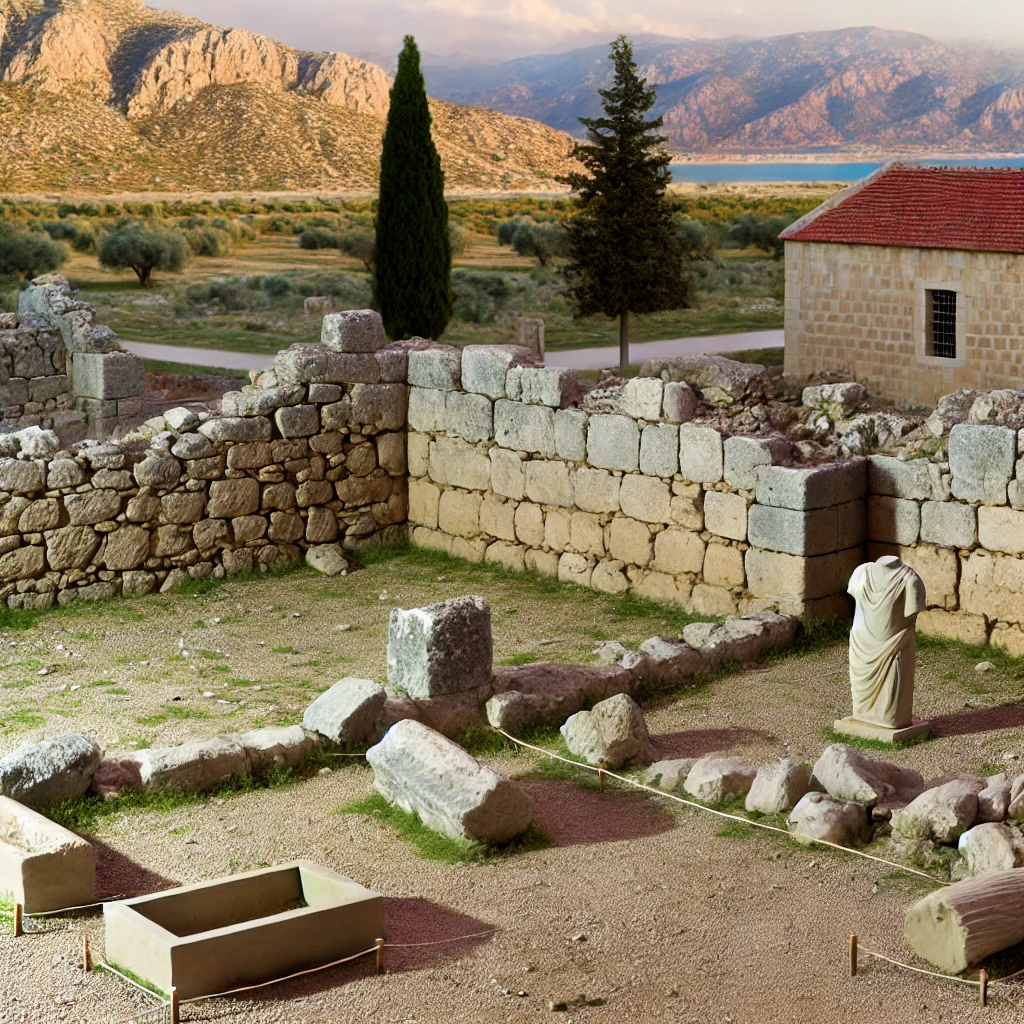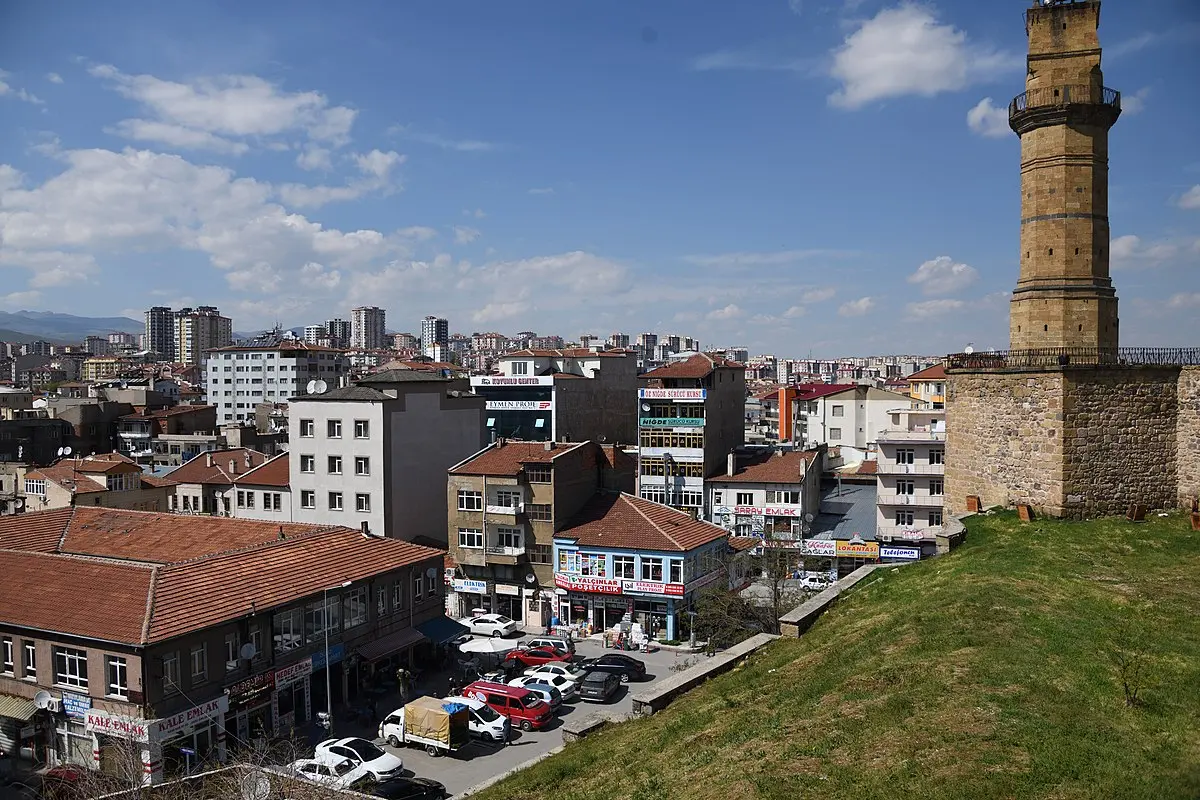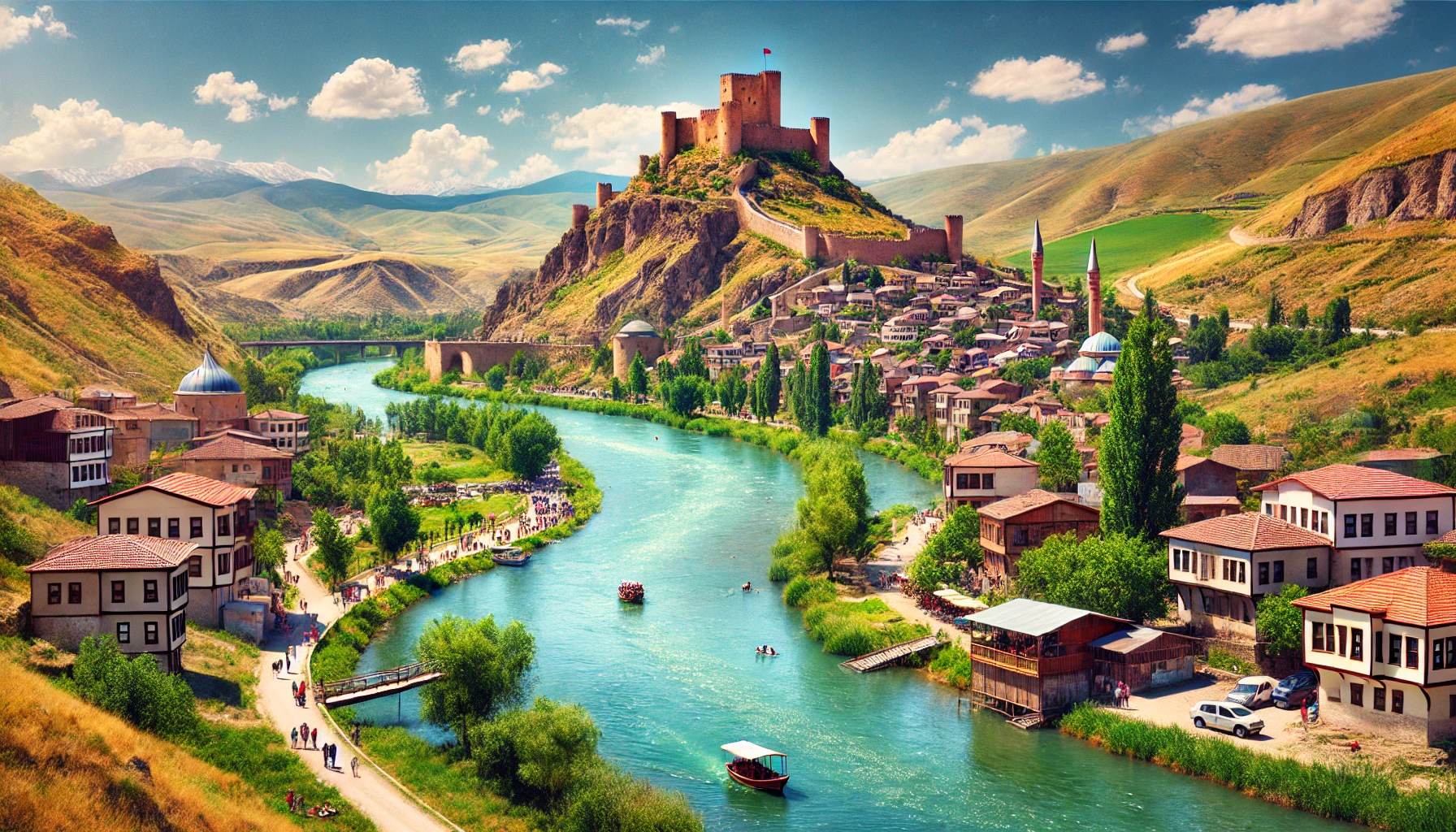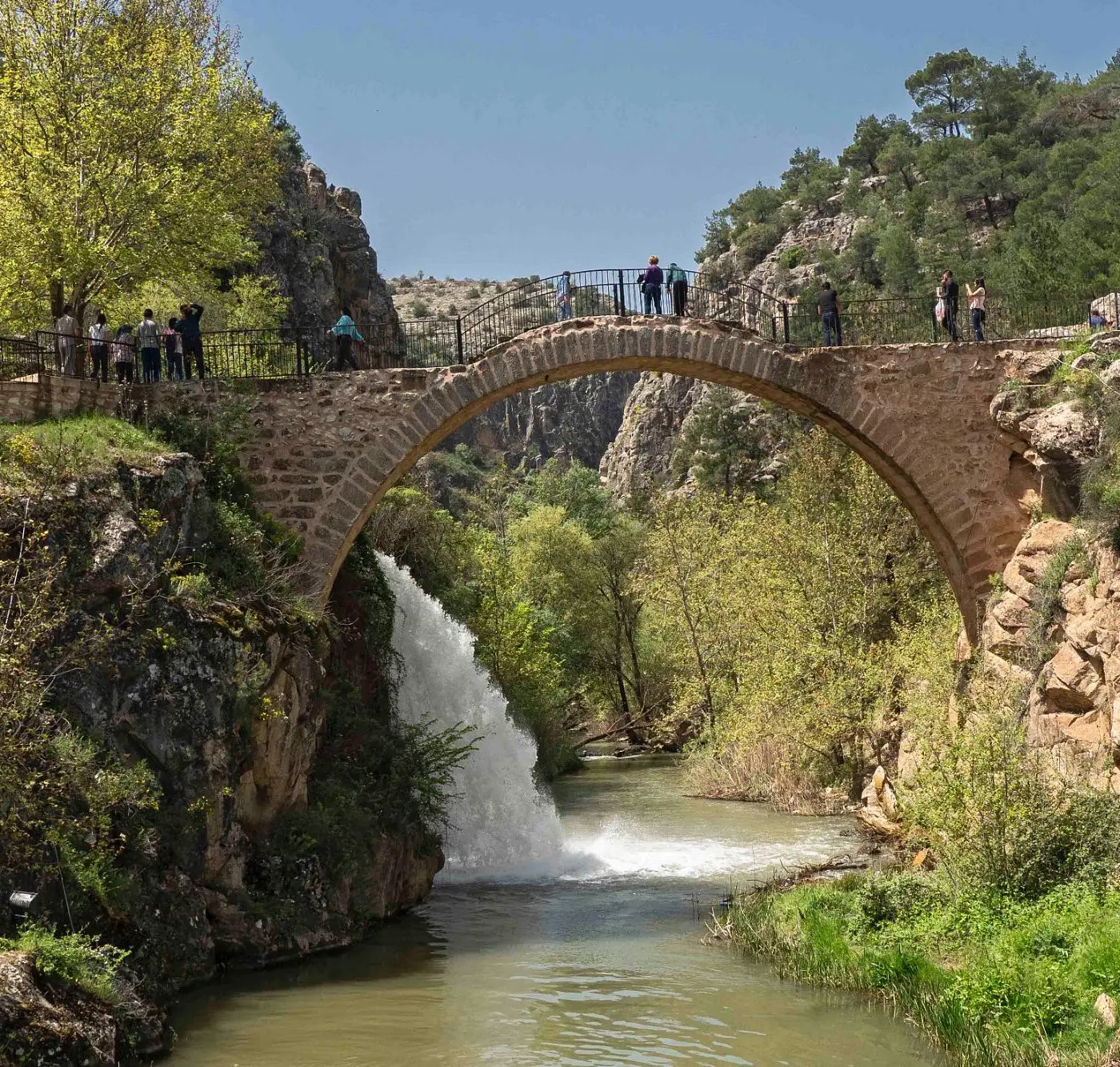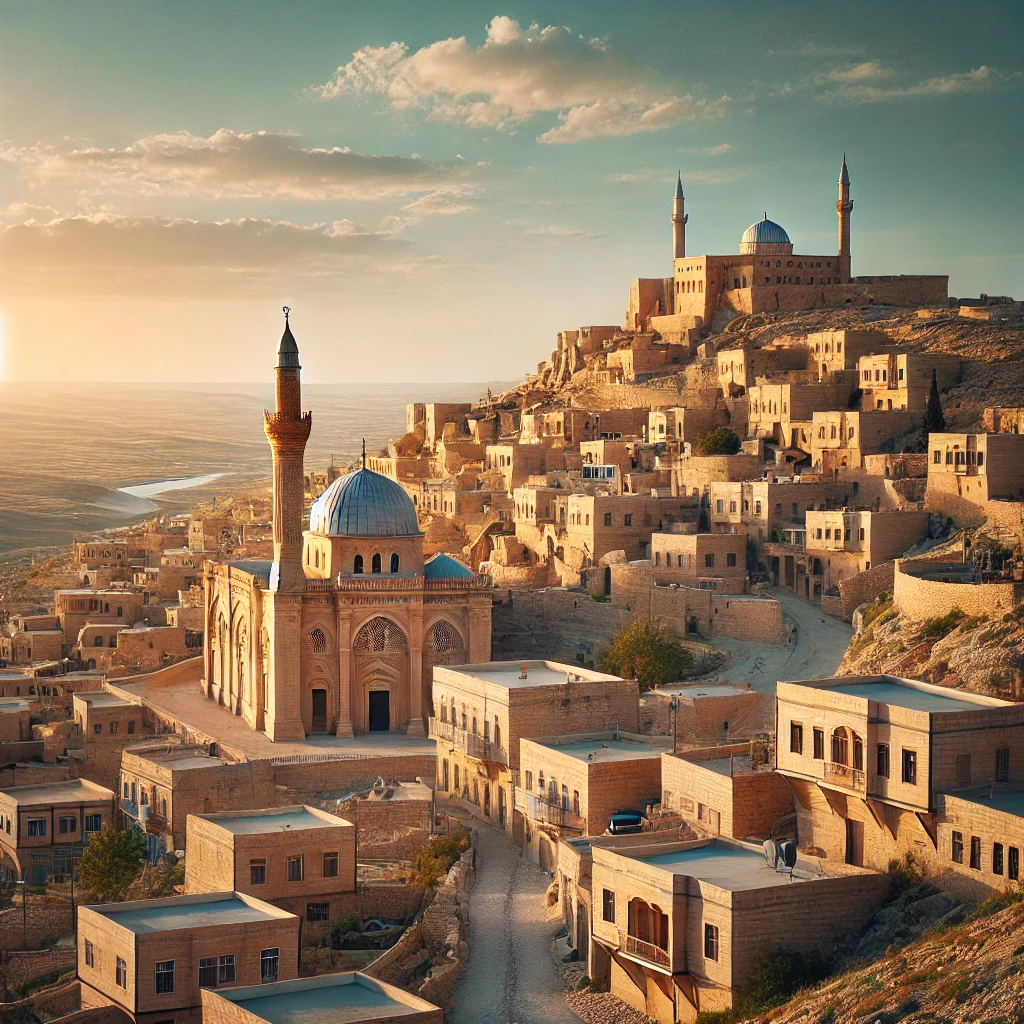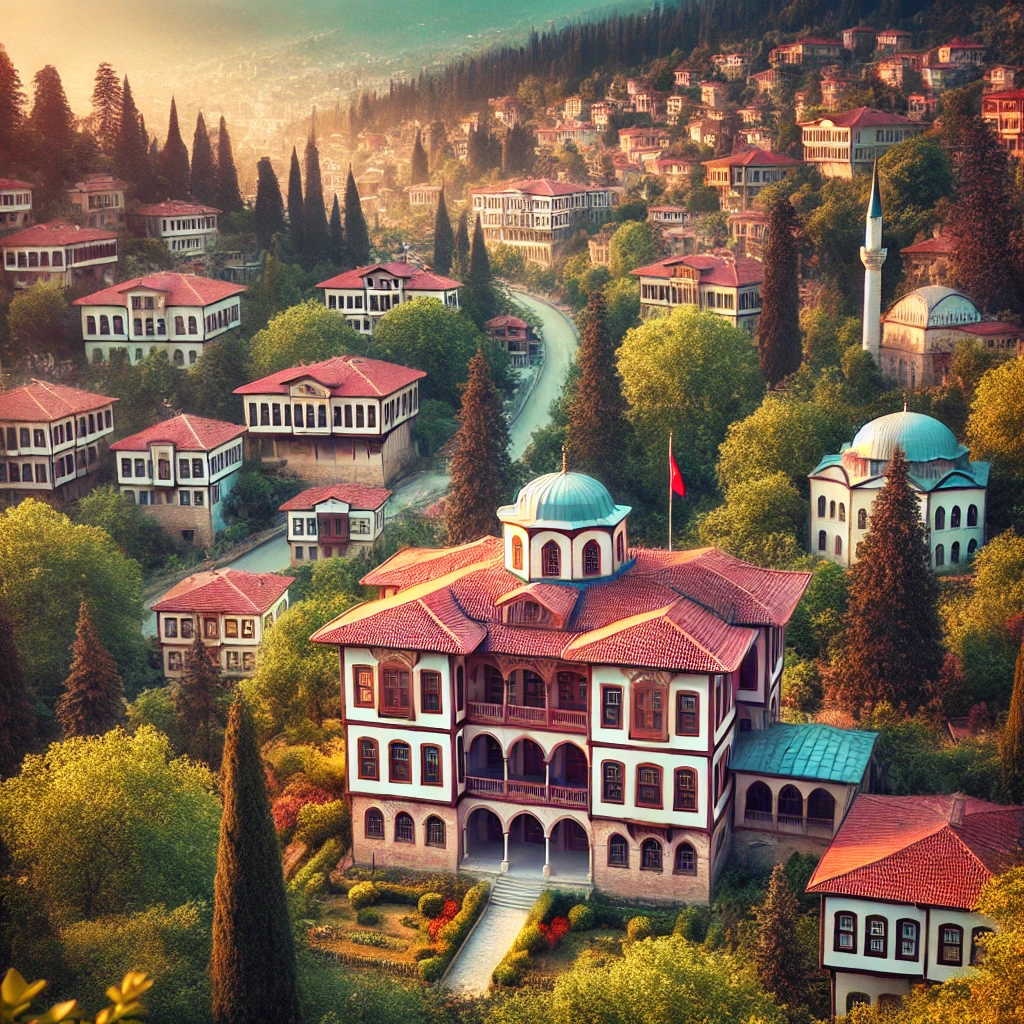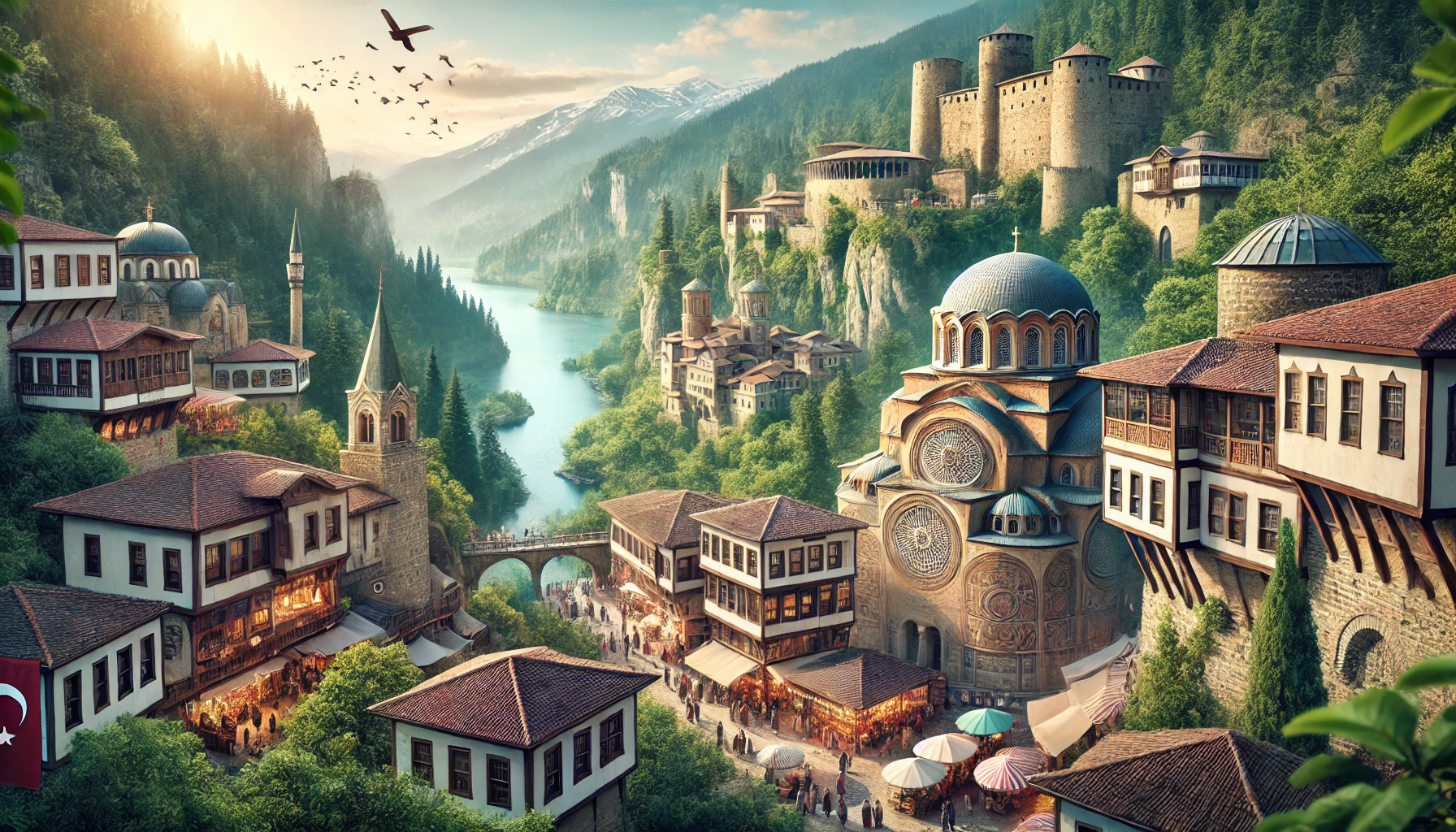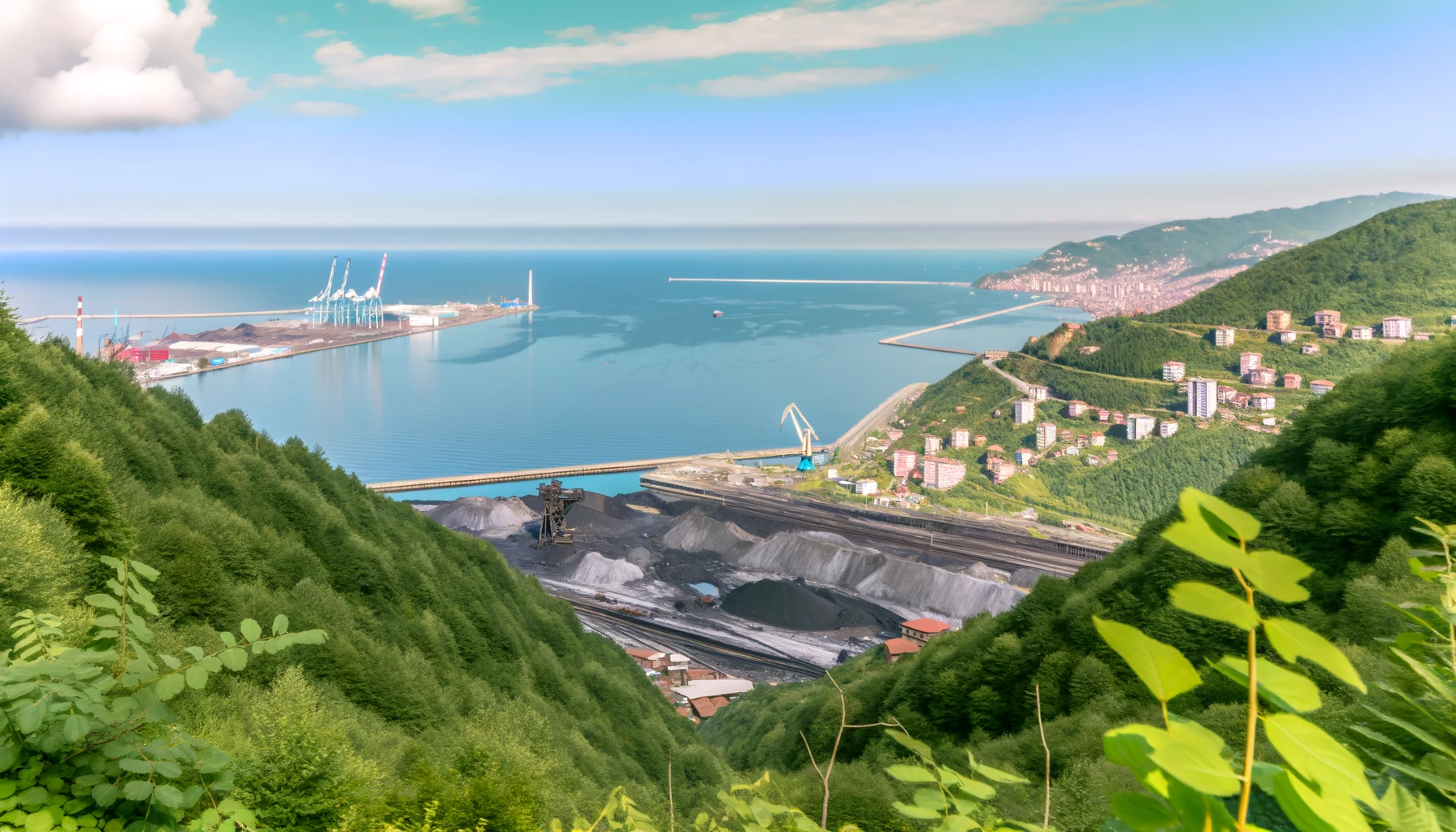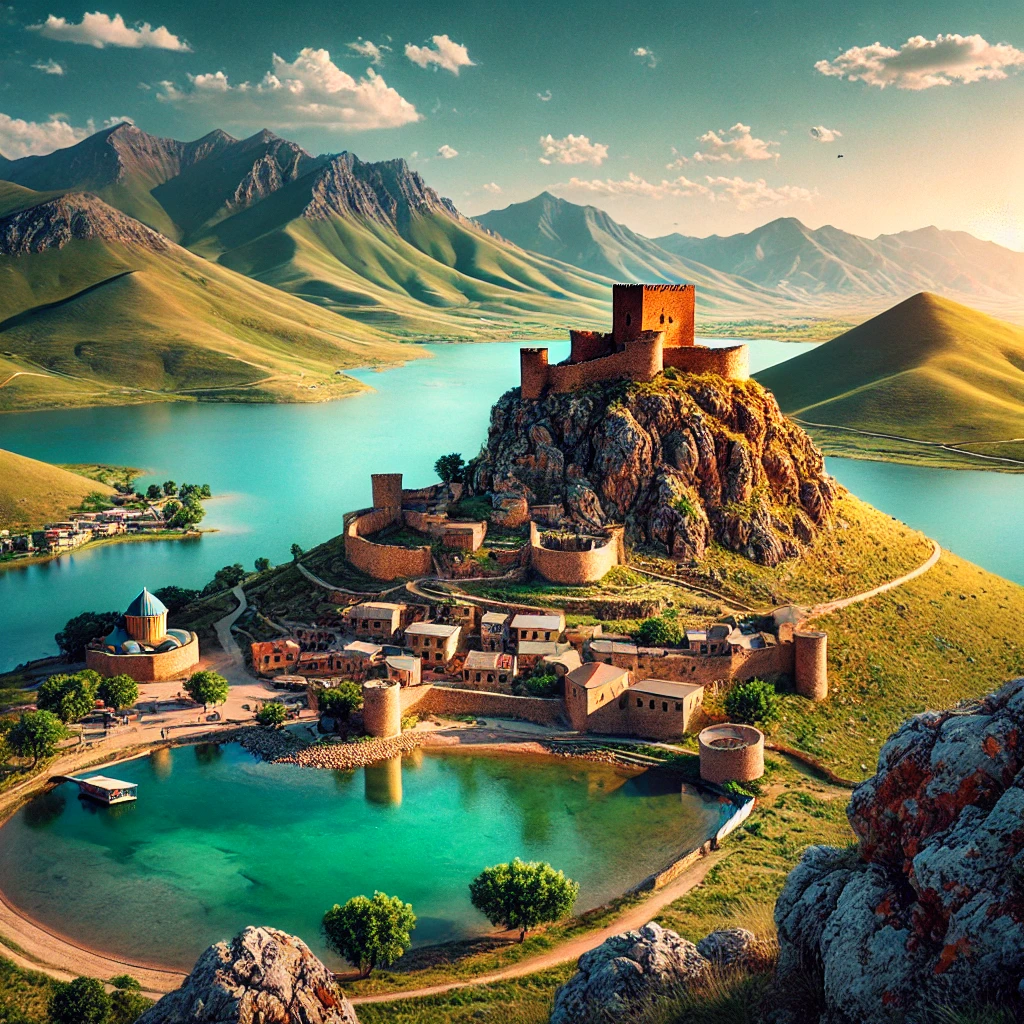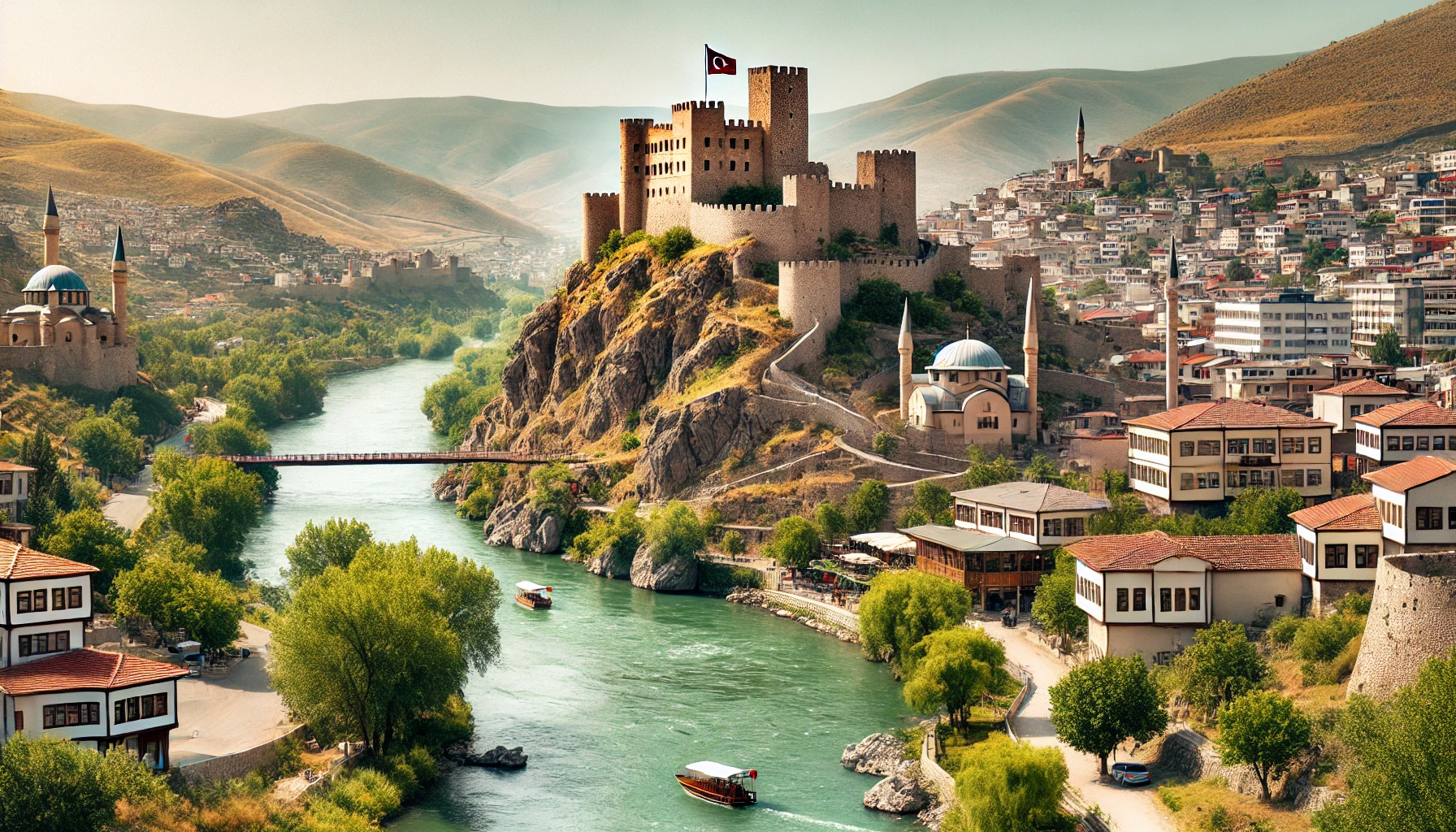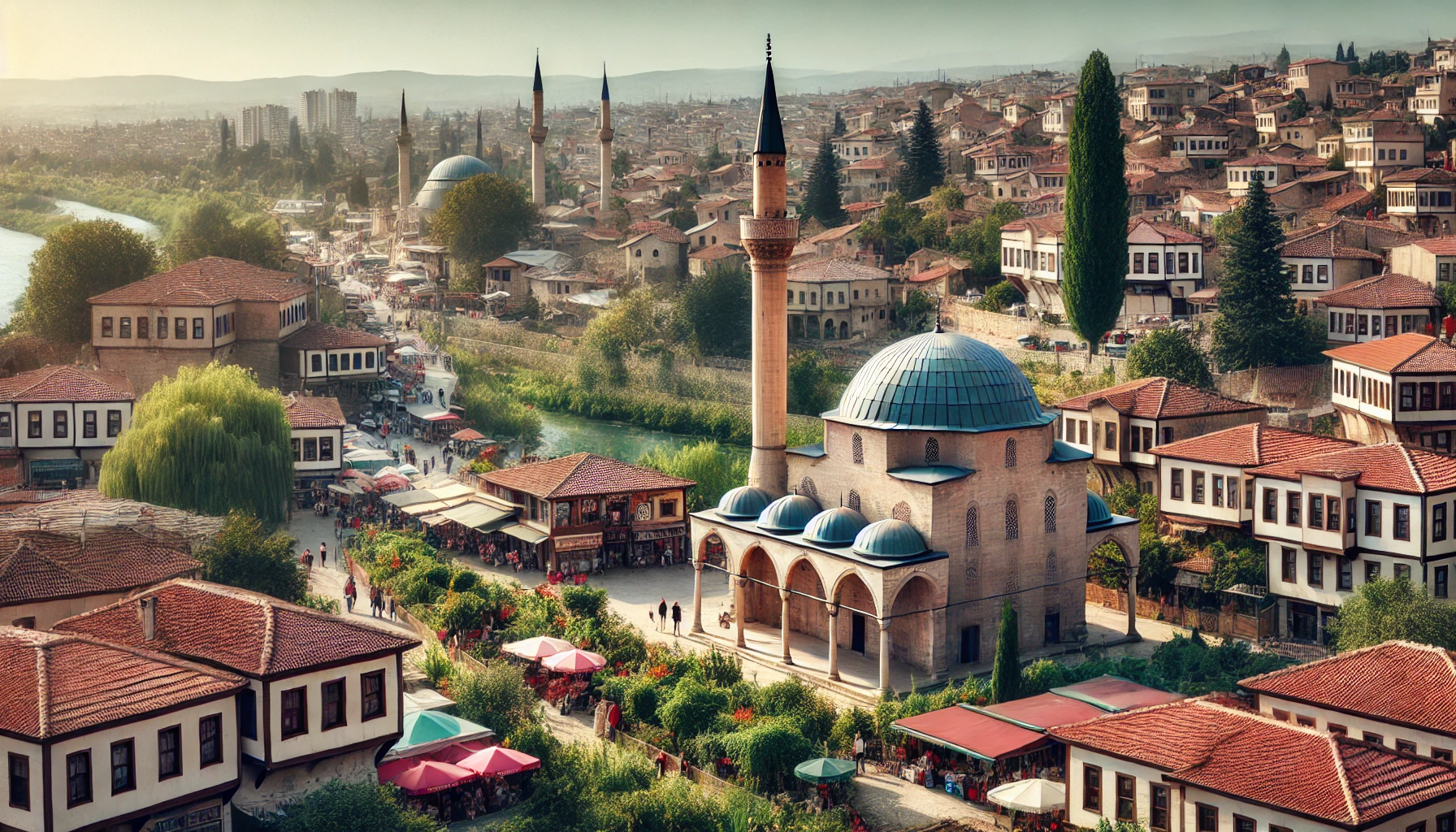Choma Ancient City, Antalya: A Hidden Gem of History and Culture
Choma Ancient City, also known as Hacımusalar or Beyler Mound, is a captivating archaeological site located just 15 km southwest of Antalya’s Elmalı district. This ancient city, perched atop a mound and surrounded by picturesque landscapes, offers a glimpse into the rich history of the region. With findings dating back to 3000 BC, Choma provides a fascinating journey through the Copper, Early Bronze, and Iron Ages, as well as the Hellenistic, Roman, and Byzantine periods. In this article, we will explore the intriguing history, unique architectural features, and cultural significance of Choma Ancient City, making it a must-visit destination for history enthusiasts and travelers alike.
The Location of Choma Ancient City
Discovering Hacımusalar Mound
Choma Ancient City is situated between the villages of Hacımusalar and Beyler, on a mound that rises 1040 meters above sea level. The word “Choma,” derived from the Hellenic language, means “hill, heap, or mound,” aptly describing the city’s elevated location. The mound’s round appearance, high sides, and central hollow create a natural fortress, providing an ideal site for settlement throughout various historical periods.
The Scenic Surroundings of Elmalı
Elmalı, the district where Choma is located, is known for its beautiful landscapes and rich cultural heritage. Surrounded by the Taurus Mountains, Elmalı offers a tranquil environment that contrasts with the bustling tourist hubs of Antalya. Visitors to Choma can enjoy the serene beauty of the area, making it an excellent destination for both history buffs and nature lovers.
The Historical Significance of Choma Ancient City
Unearthing 3000 Years of History
Excavations at Choma Ancient City began in 1994, revealing a wealth of artifacts and structures that span several millennia. The city’s historical layers include remnants from the Copper, Early Bronze, and Iron Ages, as well as the Hellenistic, Roman, and Byzantine periods. These findings suggest that Choma was a densely populated settlement with significant cultural and economic importance.
A Center of Religious Activity
Choma Ancient City is believed to have been an important religious center during its time. The presence of Lycian-type sarcophagi, wall paintings with human figures, plant and geometric motifs, and mosaic ceilings suggests a thriving spiritual community. The city’s inclusion in ancient bishop’s lists further supports the idea that Choma played a key role in religious activities during the Byzantine period.
Architectural Features of Choma Ancient City
The Fortification Walls
One of the most striking features of Choma Ancient City is its fortification walls. The city was well-protected by an adobe fortification wall on its eastern side, while another sandstone wall on the northern slope supported the mud-brick structure. These defensive walls indicate that Choma was a strategically important settlement, likely due to its elevated position and the valuable resources in the surrounding area.
The Terraces and Church
The terraces on the slopes of the mound suggest that the inhabitants of Choma adapted their architecture to the challenging terrain. These terraces not only provided additional living space but also contributed to the city’s defense. In the middle of the city, a church divided into three phases and dated to between the 5th and 11th centuries stands as a testament to the city’s religious significance. This church, with its well-preserved architectural elements, offers valuable insights into the Byzantine period’s ecclesiastical architecture.
Artifacts and Discoveries at Choma
Wall Paintings and Mosaics
During the excavations at Choma Ancient City, archaeologists uncovered stunning wall paintings featuring human figures, plant motifs, and geometric patterns. These artworks, along with the mosaic ceilings, reflect the artistic sensibilities of the city’s inhabitants and provide a glimpse into the aesthetic preferences of the time. The vibrant colors and intricate designs of these artworks suggest that Choma was a center of cultural and artistic activity.
Pottery and Ritual Objects
The discovery of pottery and ritual objects at Choma further emphasizes the city’s religious importance. These items, used in various ceremonies and rituals, highlight the spiritual life of the city’s inhabitants. The presence of such artifacts also suggests that Choma was a site of pilgrimage or religious gatherings, attracting visitors from surrounding regions.
The Importance of Preserving Choma Ancient City
A Heritage Site at Risk
Like many ancient sites, Choma Ancient City faces the risk of deterioration due to natural and human factors. The ongoing excavations and preservation efforts are crucial to safeguarding this historical treasure for future generations. By visiting Choma and supporting preservation initiatives, travelers can contribute to the conservation of this unique site and help ensure that its history is not lost.
The Role of Choma in Antalya’s Cultural Landscape
Choma Ancient City is an integral part of Antalya’s rich cultural heritage. While the region is widely known for its stunning beaches and luxury resorts, sites like Choma offer a deeper connection to the history and traditions of Türkiye. By exploring Choma, visitors can gain a greater appreciation for the diverse and complex history that has shaped this beautiful region.
Visiting Choma Ancient City
How to Get There
Hacımusalar Mahallesi Elmalı – Kaş Karayolu Elmalı / Antalya
Choma Ancient City is located approximately 15 km southwest of the Elmalı district center in Antalya. The site is accessible by car, and the journey offers picturesque views of the surrounding countryside. Visitors can also explore nearby villages, which provide a glimpse into the traditional lifestyle of the region.
What to Expect
A visit to Choma Ancient City offers a unique opportunity to explore a lesser-known archaeological site in Türkiye. The site’s well-preserved ruins, stunning views, and historical significance make it a rewarding destination for travelers interested in history and culture. Be sure to wear comfortable shoes and bring a camera to capture the breathtaking scenery and ancient structures.
Tips for Travelers
- Plan Ahead: Research the site’s history and significance before your visit to enhance your experience.
- Respect the Site: Follow guidelines for visitors and avoid touching or disturbing any artifacts or structures.
- Explore the Surroundings: Take the time to explore the nearby villages and natural landscapes to fully appreciate the beauty of the region.
Exploring Antalya: The Jewel of the Turkish Riviera
Antalya, often referred to as the “Turkish Riviera,” is a city that effortlessly blends history, culture, and natural beauty. Located on the southwestern coast of Türkiye, Antalya is one of the country’s most popular tourist destinations, attracting millions of visitors each year. This city, with its stunning Mediterranean coastline, ancient ruins, and vibrant cultural scene, offers something for everyone, making it a must-visit location for travelers seeking both relaxation and adventure.
A Historical Tapestry
Antalya’s history dates back to the Hellenistic period, around the 2nd century BC, when it was founded by King Attalus II of Pergamon. Over the centuries, it has been ruled by various civilizations, including the Romans, Byzantines, and Seljuks, each leaving their indelible mark on the city. This rich historical tapestry is evident in the numerous archaeological sites and monuments scattered throughout Antalya.
One of the most iconic historical landmarks in Antalya is Hadrian’s Gate, a triumphal arch built in honor of the Roman Emperor Hadrian’s visit to the city in 130 AD. This well-preserved gate, with its three imposing arches and ornate carvings, serves as a grand entrance to the old town, or Kaleiçi. Kaleiçi itself is a maze of narrow, cobblestone streets lined with Ottoman-era houses, boutique hotels, and charming cafes, offering a glimpse into the city’s past.
Another must-visit historical site is the ancient city of Perge, located just a short drive from Antalya. Perge was once a major city of the Pamphylia region and is known for its impressive Roman ruins, including a well-preserved theater, a stadium, and the remnants of a grand agora. Walking through Perge, one can easily imagine the city in its heyday, bustling with traders and citizens going about their daily lives.
Natural Beauty and Outdoor Adventures
Beyond its historical attractions, Antalya is also renowned for its breathtaking natural beauty. The city is framed by the Taurus Mountains to the north and the azure waters of the Mediterranean Sea to the south. This unique geography makes Antalya a haven for outdoor enthusiasts.
The beaches of Antalya are among the most beautiful in Türkiye, with pristine sands and crystal-clear waters. Konyaaltı Beach, located just west of the city center, is a popular spot for both locals and tourists. This pebble beach stretches for several kilometers and offers stunning views of the surrounding mountains. Another famous beach is Lara Beach, known for its fine sand and luxurious resorts. It is a great place to unwind and enjoy the Mediterranean sun.
For those seeking adventure, the Taurus Mountains offer a range of activities, from hiking and mountain biking to paragliding. The region is dotted with scenic trails that lead to stunning viewpoints, hidden waterfalls, and traditional mountain villages. The Lycian Way, one of the most famous long-distance hiking trails in the world, passes through this region, offering hikers the chance to explore ancient ruins, dramatic coastlines, and lush forests.
A Culinary Delight
Antalya is also a paradise for food lovers, with a cuisine that reflects the region’s diverse cultural influences. The city’s restaurants and street vendors serve up a variety of delicious dishes, from fresh seafood to traditional Turkish kebabs. One of the highlights of Antalya’s culinary scene is its mezes, a selection of small dishes that are often served as appetizers. These can include anything from creamy hummus and smoky eggplant dips to stuffed grape leaves and spicy sausages.
No visit to Antalya is complete without sampling the local desserts. Baklava, a sweet pastry made of layers of filo dough filled with nuts and drenched in honey, is a must-try. Another popular treat is künefe, a warm, cheese-filled pastry soaked in sweet syrup and topped with crushed pistachios.
Modern Amenities and Vibrant Culture
While steeped in history, Antalya is also a modern city with all the amenities that today’s travelers expect. The city boasts a range of accommodations, from budget-friendly hostels to five-star resorts, catering to all types of visitors. Antalya’s shopping scene is equally diverse, offering everything from traditional bazaars where you can haggle for carpets and spices to modern malls with international brands.
Antalya’s vibrant cultural scene is showcased in its many festivals and events. The Antalya Film Festival, one of the oldest and most prestigious film festivals in Türkiye, attracts filmmakers and celebrities from around the world. The city also hosts a variety of music, dance, and art festivals throughout the year, providing a rich cultural experience for visitors.
Conclusion
Choma Ancient City, nestled in the heart of Antalya’s Elmalı district, is a hidden gem that offers a fascinating journey through thousands of years of history. From its strategic fortifications to its religious significance, Choma provides valuable insights into the ancient world and the cultural heritage of Türkiye. Whether you’re a history enthusiast, a cultural explorer, or simply a traveler looking to experience something unique, Choma Ancient City is a must-visit destination.
For more information on exploring Antalya and its historical sites, visit the Travel Guide of Türkiye.
Latest Update: Aug 14, 2024
Your Content Goes Here
TAGS: ancient art Antalya, ancient mounds Türkiye, ancient pottery, ancient settlements Türkiye, ancient wall paintings, Antalya archaeological finds, Antalya cultural heritage, Antalya heritage preservation, Antalya history, Antalya history enthusiasts, Antalya religious sites, Antalya tourism, Antalya travel, Beyler Mound, Byzantine Church, Byzantine period Antalya, Choma Ancient City, Choma bishop’s lists, Choma excavations, Choma fortifications, Choma historical significance, Choma mosaics, Choma terraces, Copper Age settlements, cultural tourism Türkiye, Early Bronze Age, Elmalı district, Elmalı villages, Hacımusalar Mound, Hellenistic period Antalya, historical sites in Antalya, Iron Age artifacts, Lycian sarcophagi, ritual objects Choma, Roman period Antalya, Taurus Mountains, Travel Guide of Türkiye, Turkish archaeological sites
A brief summary of the key points in this article.
Latest Travel Guides
Weather Today in Choma, Antalya, Turkey
Location: Antalya Province
Temperature: 13.33°C
Condition: Light intensity shower rain

